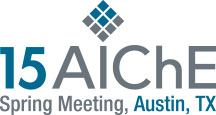

The computational fluid dynamics modeling tool FLACS has been widely used for detailed consequence modeling of flamable vapor dispersion and vapor cloud explosion scenarios in LNG facilities for several years. Recently, the modeling capabilities of FLACS were extended with the release of a fire modeling package (FLACS-Fire), which allows thermal radiation from jet and pool fires to be calculated, using the same detailed geometry model of a facility, already developed for the vapor dispersion and explosion studies.
This paper will discuss the FLACS-Fire ability to model the flame size, shape and thermal radiation observed in large-scale LNG pool fire experiments (such as the Montoir fire and the Phoenix test series). The paper will also describe typical applications of the FLACS fire model to LNG facility siting studies, and provide modeling guidance for performing such studies in an accurate and efficient manner.
